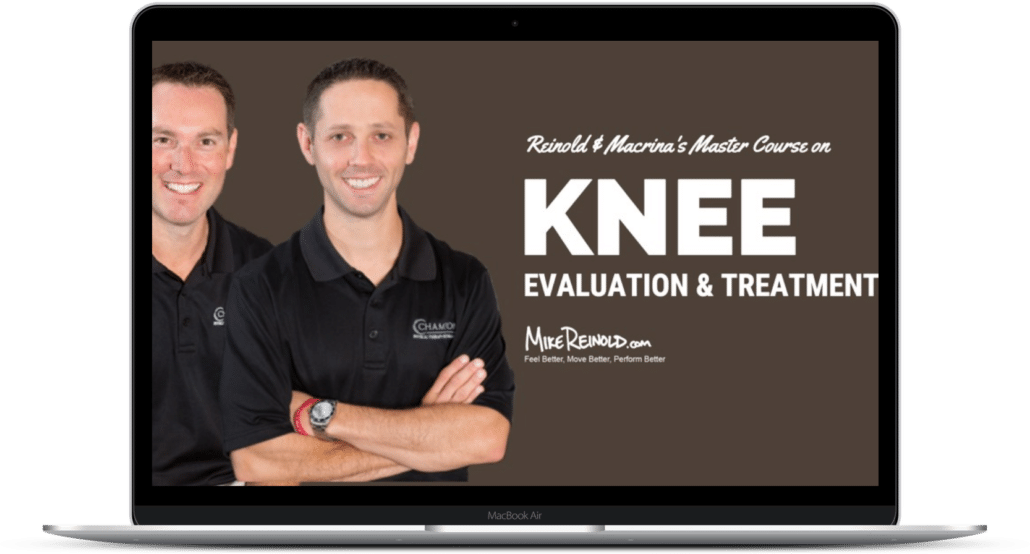 Patellofemoral pain is one of the most commonly diagnosed knee pathologies. Despite the prevalence of the diagnosis, the exact mechanism and source of pain continue to be unclear. This lack of clarity is likely the reason why we continue to use such vague, non-descriptive terminology such as “patellofemoral pain.” As rehabilitation specialists, it is often our job to disregard a diagnosis like this and instead rely on our clinical examination to find functional deficits, such as loss of strength or joint mobility, to lead our treatment plans.
Patellofemoral pain is one of the most commonly diagnosed knee pathologies. Despite the prevalence of the diagnosis, the exact mechanism and source of pain continue to be unclear. This lack of clarity is likely the reason why we continue to use such vague, non-descriptive terminology such as “patellofemoral pain.” As rehabilitation specialists, it is often our job to disregard a diagnosis like this and instead rely on our clinical examination to find functional deficits, such as loss of strength or joint mobility, to lead our treatment plans.
The source of patellofemoral pain has long been debated. One of the most common theories involves the deterioration of the articular cartilage on the undersurface of the patella, or chondromalacia.
If you haven’t read or at least heard about it, there is an amazing article that was published in the American Journal of Sports Medicine 10 years by Scott Dye, MD (Dye, Vaupel, Dye: AJSM ’08). In the study, the researches sought to establish the source of patellofemoral pain by physically palpating various structure within the knee during arthroscopy. What is truly amazing about the study is that Dr. Dye himself actually had his knee scoped without anesthesia so that he could consciously quantify the level of discomfort he felt! Dr. Dye can never be accused of not sacrificing himself for the sake of the advancement of sports medicine!
Cartilage defects did not cause discomfort
The first finding that was surprising was that palpation of the undersurface of his patella cause no discomfort, even with the prescene of grade III-IV articular cartilage defects. This immediately questions the cartilage being a source of patellofemoral pain.
Moderate to severe pain was caused by the retinaculum and fat pad
Conversely, the two areas of the knee that caused moderate to severe discomfort were the retinacular tissue and infrapatellar fat pad. Even more interesting was that even though these areas produced discomfort, it was difficult for the subject to localize the source of pain.
This may also at least partially explain why patellofemoral pain is so vague in our patients. This information coincides with that of Fulkerson (Clinical Orthopedics ’85) and Sanchis-Alfonso (AJSM ’98). Fulkerson reported that patellofemoral pain may be caused by enlargement and small injuries of the nerve fibers in the retinaulum. Sanchis-Alfonso report that patients with patellofemoral pain tend to have a higher amount nerve fibers and histological changes of the neural tissue.Interesting findings that seem to make sense.
Clinical Implications
So what does this mean and how does this change the way we treat patients? For one, I am not overly cautious with exercises and their effect on patellofemoral compression, unless this reproduces the patient’s symptoms. Strengthening of the quadriceps is always going to be a large part of the treatment plan for these patients. In order to do this most effectively you knee to perform open kinetic chain knee extension and work into deeper ranges of motion with closed kinetic chain exercises. My rule of thumb is that if the exercise does not cause pain or excessive crepitation, I don’t mind doing it as tolerated. But I must stress as tolerated.
It is also likley that we should treat the iritation of the retinacular tissue even if the pain is difficult to localize. This can include your choice of treatment techniques and anti-inflammatory modaliities.
I write this post in an attempt to motivate thought next time you evaluate a patient with patellofemoral pain. There is still a lot of uncertainty on this topic but with time I am sure we will continue to learn more. Have you had success directly treating the retinacular tissue? If so please share your experience.
Sign up for my FREE newsletter for even more great content!






